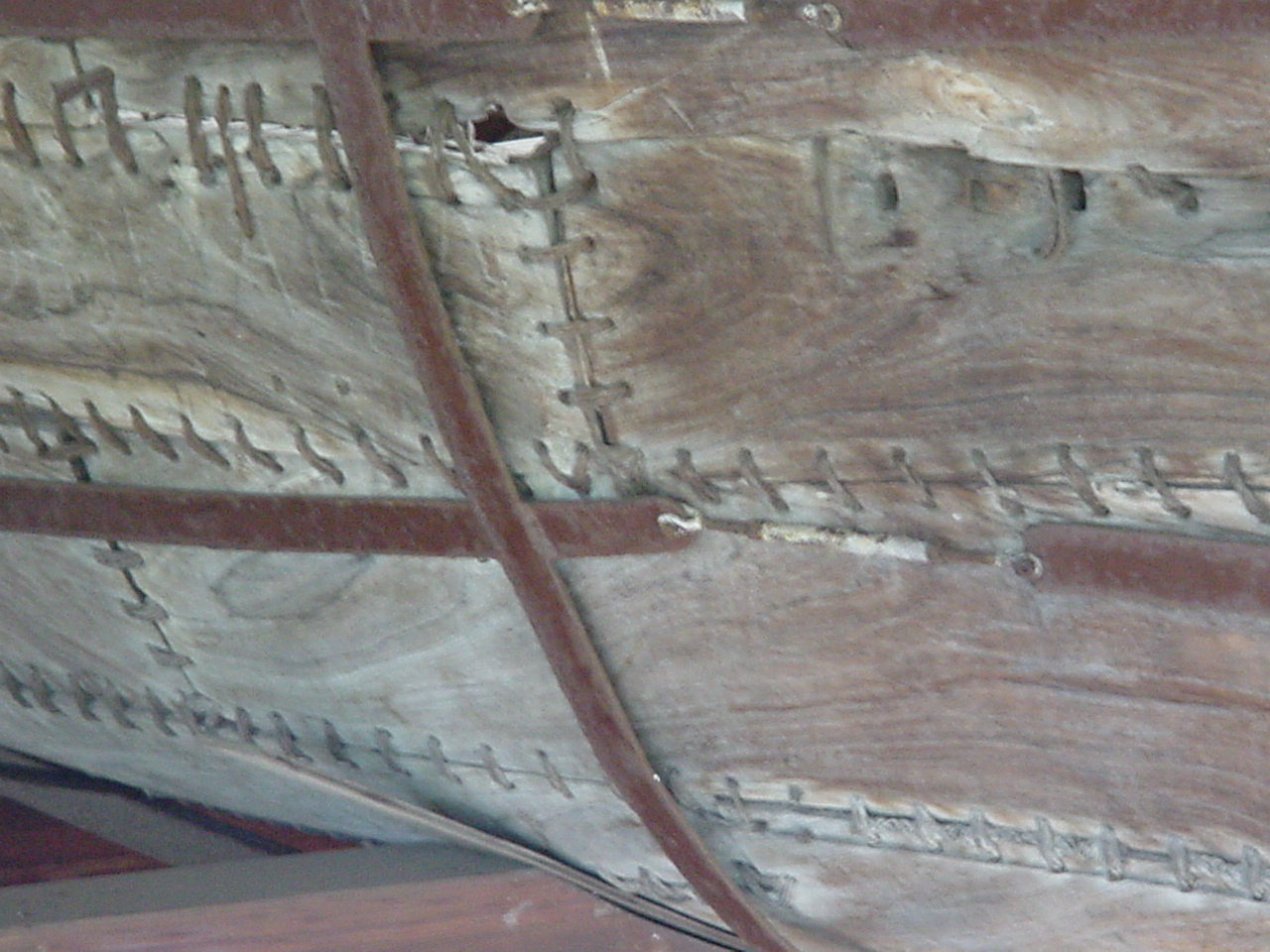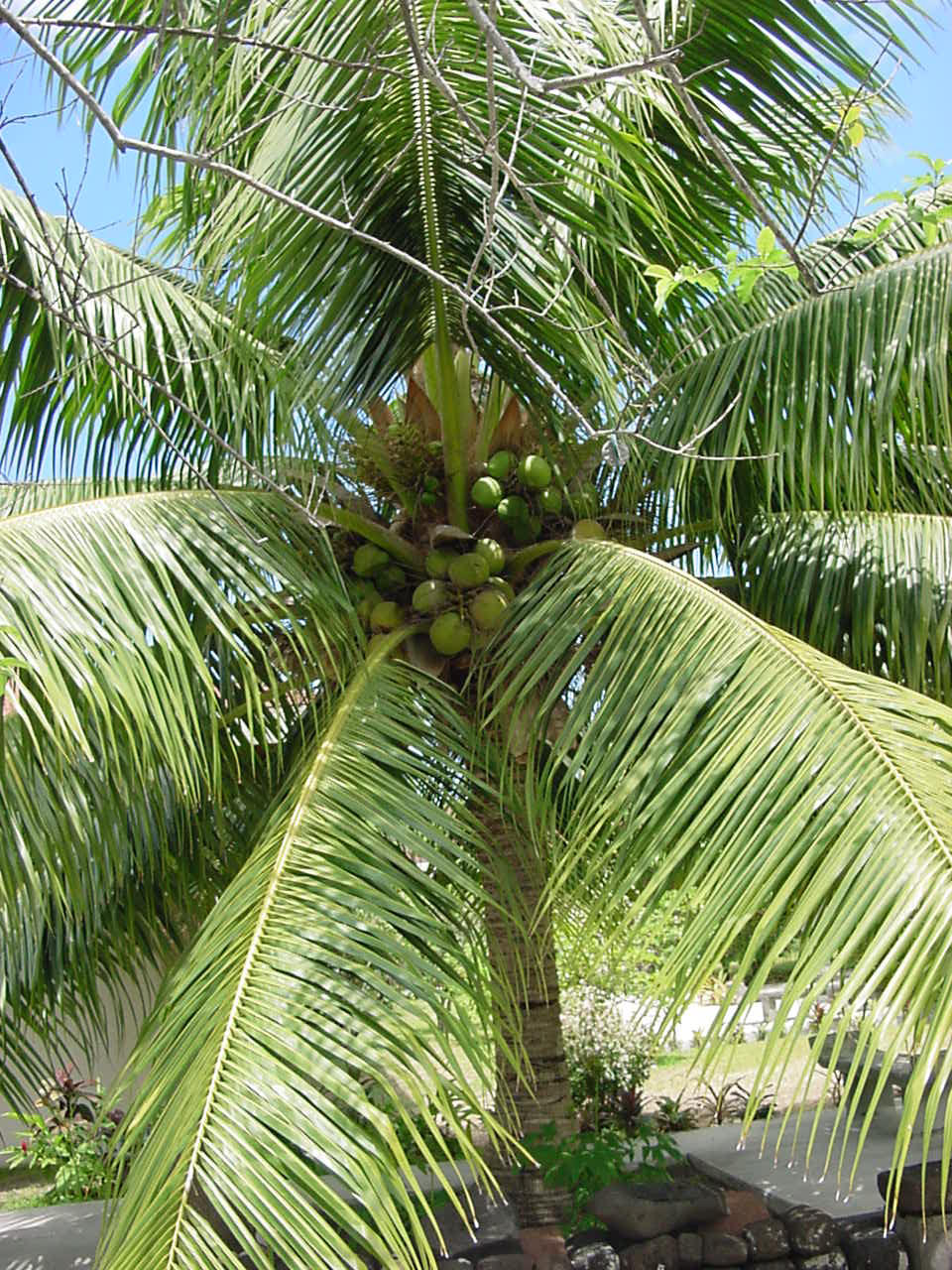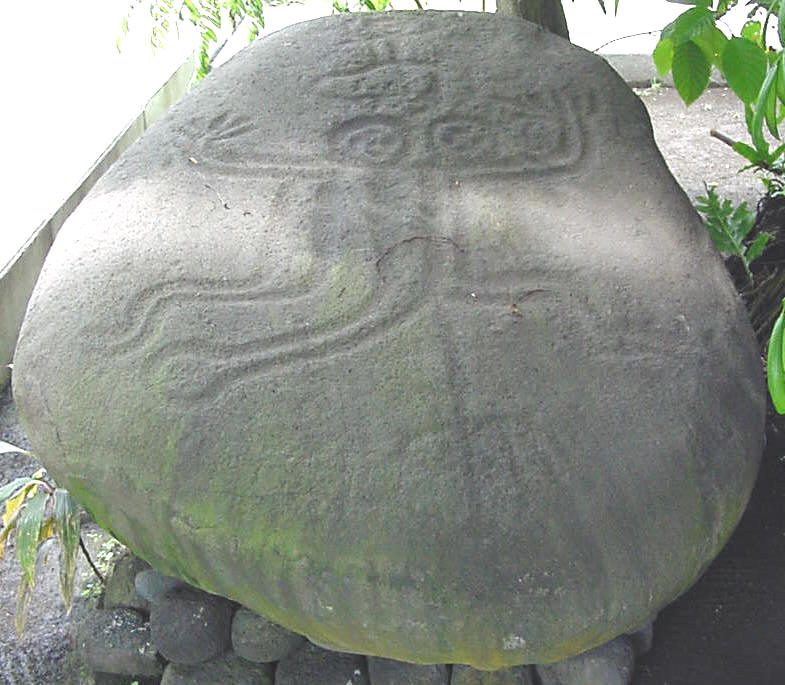| These photographs were taken in November 2002, while on a cultural mission with Cahuilla elder, Katherine Saubel. In Tahiti we were hosted by the Dexter (all but the two sons are shown at the bottom) and Marchand (shown a week before their wedding) families. |
|
|
|
|
|
The Waka We noticed many similarities between Tahitian and West Coast Native American Indian cultures. Among the similarities are the sewn canoes shown below. Coco shared with me that he had been taught that the Tahitians came to their island paradise 1,000 years ago as part of a large migration, lead in part by birds; seven large wakas (canoes) were filled with people, animals, food, and seeds when they left the land of Hawai'iki far to the northeast and sailed across the Pacific Ocean. The wakas were dispersed to Tonga, Samoa, the Marquesas Islands, the Solomon Islands, Tahiti, and New Zealand. This accounts for the many similarities, including languages which join these peoples.
|
|
|
 |
| The Local Economy The trees were full of food and Coco Dexter said the only hungry people in Tahiti are lazy. Fish are abundant and are eaten raw in a variety of ways at many locations, even the fancy French bistros. A baguette of French bread costs $.043 cents American (this is not a typo). A Snickers bar costs $3.50 American (this is not a typo, either). A watermelon the size of a volleyball costs $10.00 American. A cab ride can cost $12.00, while a ride on Le Truck costs 130 Polynesian Francs or about $1.30 American. One load of clothes, washed and dried by you at the local launderette, will set you back $16.00 American. |
 |
|
The Marae The tiki was a prominent feature of a marae, an ancient public area where battles for the Tahitian monarchy were waged. Coco showed me where the losers of these contests were executed by beheading on a large stone set on its edge. Each distinct cultural group had their own marae. You can see a portion of the terraces of lava rock built on both sides of a water course which ran when the rains poured down on the land. Spectators sat on the far side of the streambed where they would they be placed out of harm's way and where they could not contaminate the mana (dynamistic powers) involved in these battles for the monarchy. Architectural and sculptural stonework are ancient and crucial art forms. Stones, carved into anthropomorphs and zoomorphs or left in their natural forms were strategically placed around the entire island long before the first Europhones touched land. |
 |
| E Markete Papeete Some photos of the Papeette (pronounced pap-ay-ay-tay with the accent on the second ay) market where you can buy flowers of every color, shape, and fragrance, strings of shells and seeds in a rainbow of colors, fresh local fruit -- the pineapple is the best in the world I'm told, and I agree -- of all sorts, coconuts, hand-plaited bags and baskets, fabrics, jewelry, meat fish, French pastries, and preparations containing vanilla. |
|
|
|
|
|
|
|
|
|
|
| The Royal Tahitian The photos of the landscape were taken at the hotel where we stayed in the Papeete suburb of Pirea. The garden was huge and beautiful, Birds were everywhere in varieties which amazed me. They avoided human food and there was more than ample food for the hundreds of birds. This is the town's only two star hotel, but the local people consider it the best because of its gardens, Two weddings were held here on the weekend. Both brides wore American style white Cinderella dresses and covered their hair with nets of pearls. The temperature was 78 degrees and the humidity was 100%, a combination guaranteed to produce some suffering for desert dwellers. |
|
|